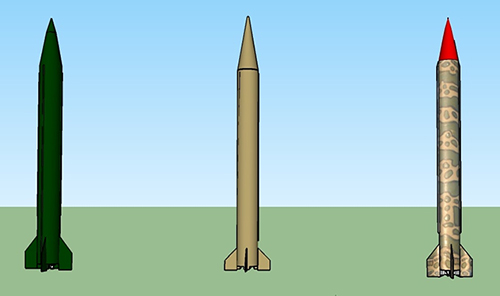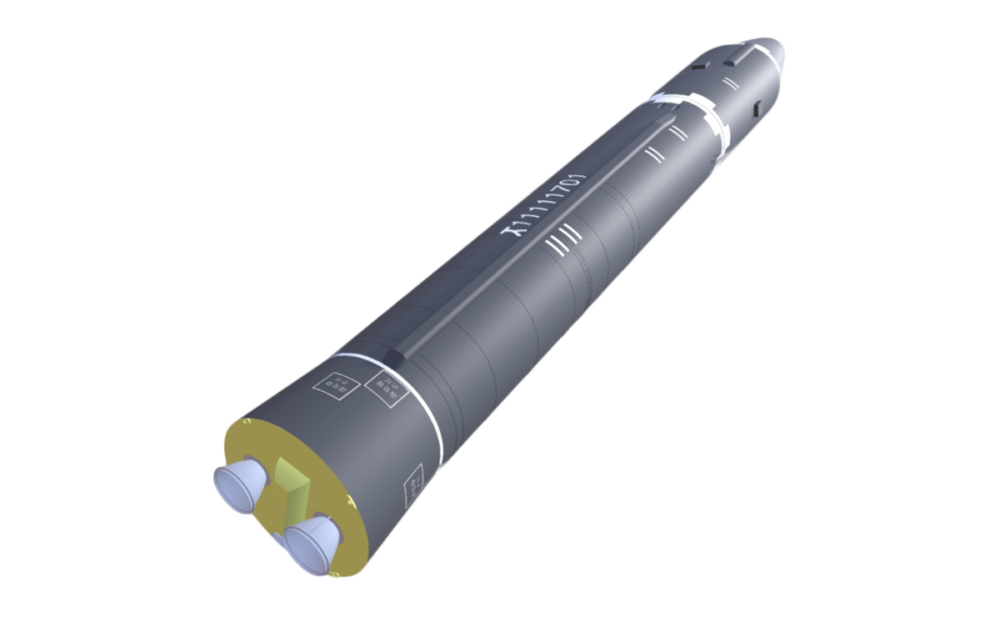
Melissa Hanham
Senior Research Associate, The James Martin Center for Nonproliferation Studies
North Korea and Iran have been suspected of collaborating on missile development for decades. New tools and open source data allow analysts to closely compare the Nodong-X and Ghadr-1 for design similarities.
The fast and easy dissemination of photos and videos is changing the way we look at missile development programs. State media entities in Iran and North Korea proudly share propaganda images via social media. Where the intelligence community (IC) used to have a monopoly on source material and analysis, the rise of quick, easy, and cheap data transmission means new information can be gleaned from a simple photograph.
In 1995, Defense Intelligence Agency analysts may have used classified satellite images, telephone intercepts, and double agents to produce diagrams like the one below.
![North Korean Missiles Size and Range [1] - 3D View: North Korean and Iranian Missile Collaboration?](https://www.nti.org/wp-content/uploads/2021/10/nk_missiles_length.jpg)
Today, even those outside the IC can produce 3D models almost as soon as Iranian or North Korean images are shared. This model of North Korea’s Nodong missile was constructed from still and video images using free Trimble SketchUp and Google Earth.
See NTI's collection of 3D Missile Models
The Nodong is a liquid-fueled single stage medium range ballistic missile (MRBM) with an estimated range of over 1,000km. [2] North Korean scientists most likely started developing it in 1988 as a continuation of its program to reverse-engineer Scuds which they received from Egypt in the 1970s. [3] Its payload can carry nuclear, chemical, biological munitions, or high explosives.
North Korea exported complete missile systems to countries such as Egypt, Iran, Libya, Pakistan, Syria, the United Arab Emirates, and Yemen. [4] While exports were primarily reverse-engineered Scuds, the Nodong missile was exported to both Iran and Pakistan. Iran and Pakistan produced copies which are almost identical externally, known as the Shahab-3 and Ghauri respectively. [5]

While Pakistan's Ministry of Defence made almost no changes to the exterior of the Nodong when it produced the Ghauri-I, Iranian scientists experimented with different nosecones on the Shahab-3. The triconic shape may be an attempt to lower the overall weight of the missile.

In addition to few design modifications, there is no evidence in the open source to suggest that Pakistan continued to purchase complete missile systems after 1996. Iran's design program stands out in the number of changes made to the original Nodong. In fact, Iran became so capable at its own design and production, that it may now be outpacing North Korea. After showing off the triconic nosecones on both the Shahab-3 and the Ghadr variations, North Korea unveiled a triconic nosecone on its Nodong-X in October 2010.
Iran continued to experiment with the triconic nosecone, and made additional changes as it stretched the original design to its limit to produce the Ghadr missiles. Of greatest interest, are the variations in the nosecone, cable raceways, and stabilizers. The nosecone, which houses the warhead, was whittled away, leaving room for only a miniaturized warhead and possibly guidance equipment. Some images of Ghadrs show perforations around the area where separation would occur, which is not visible on the Nodong-X. The Ghadr missiles also vary in where the cable raceways attach to the nosecone. Last, the Ghadr has much smaller stabilizers than the Nodong. The overall effect is a reduction in weight.
In an October 2010 parade, North Korea showed off a new version of the Nodong known as the Nodong-X to outside analysts. It sported a triconic nosecone like Iran's, but retained the larger stabilizers.
It is clear that Iran and Pakistan used North Korean Nodongs for their missile programs. Still more interesting, is the ongoing relationship between Iran and North Korea. Open source images and videos depicting similar design and evolution of the programs coupled with the exchange of rocket scientists and military officials in each other's countries is evidence of a relationship based on mutual consultation.
Sources:
[1] Defense Intelligence Agency, "North Korea: The Foundations for Military Strength—Update 1995," Information Cutoff Date 31 December 1995, via nautilus.org.
[2] Joseph S. Bermudez Jr, "A History of Ballistic Missile Development in the DPRK," James Martin Center for Nonproliferation Studies, 1999, www.nonproliferation.org.
[3] Joseph S. Bermudez Jr, "A History of Ballistic Missile Development in the DPRK," James Martin Center for Nonproliferation Studies, 1999, www.nonproliferation.org.
[4] Joshua Pollack, "Ballistic Trajectory," The Nonproliferation Review, 21 June 2011, 18:2, 411-429, www.tandfonline.com.
[5] National Air Intelligence Center, "Ballistic and Cruise Missile Threat," September 2000, via: wwww.nukestrat.com.
[6] Joshua Pollack, "Ballistic Trajectory," The Nonproliferation Review, 21 June 2011, 18:2, 411-429, www.tandfonline.com.
[7] A collection of open source images exists at: www.b14643.de.
Sign up for our newsletter to get the latest on nuclear and biological threats.
The threat of non-state actors using unmanned aerial vehicles (UAV) to carry out terrorist attacks. (CNS)
Addressing challenges associated with the threat of cruise missiles and UAVs, and evaluating how more effective policies can help contain them. (CNS)
A collection of missile tests including the date, time, missile name, launch agency, facility name, and test outcome.
